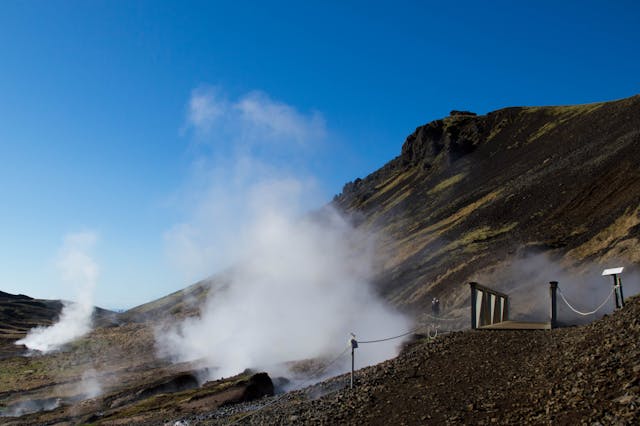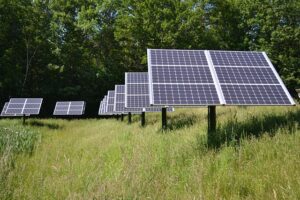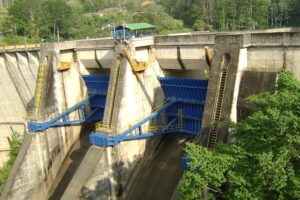Exploring Geothermal Energy as a Sustainable Heat Source
Welcome to the fascinating world of geothermal energy! Imagine harnessing the Earth’s natural heat to power our homes, businesses, and industries. In today’s quest for sustainable heat sources, geothermal energy stands out as a reliable and environmentally friendly option. Let’s embark on a journey to understand this incredible energy source and its potential to reshape our energy future.
Importance of Sustainable Heat Sources
As we face the realities of climate change and the depletion of fossil fuels, the importance of sustainable heat sources cannot be overstated. Geothermal energy offers a consistent and renewable alternative, reducing our carbon footprint and helping us transition to a greener future.
Brief Overview of Geothermal Energy
Geothermal energy is derived from the heat stored beneath the Earth’s surface. This heat can be used directly for heating or converted into electricity through various technologies. Unlike solar or wind power, geothermal energy is available 24/7, making it a reliable and sustainable energy source.
Understanding Geothermal Energy
What is Geothermal Energy?
Geothermal energy originates from the Earth’s core, where temperatures reach up to 9,000 degrees Fahrenheit. This heat is transferred to the surface through volcanic activity, hot springs, and other geothermal phenomena. By tapping into this heat, we can produce energy in the form of heat or electricity.
Historical Background
The use of geothermal energy dates back to ancient times when people used hot springs for bathing and cooking. The first geothermal power plant was built in Larderello, Italy, in 1904. Since then, technological advancements have significantly expanded the applications and efficiency of geothermal energy.
How Geothermal Energy Works
Geothermal energy production involves drilling wells into geothermal reservoirs to access hot water or steam. This thermal energy can then be used directly for heating or to drive turbines for electricity generation. The cooled water is often reinjected into the Earth to sustain the reservoir.
Types of Geothermal Resources
Hydrothermal Resources
Hydrothermal resources are the most common type of geothermal resource. They consist of hot water or steam trapped in porous rock formations. These resources are typically found near tectonic plate boundaries and volcanic regions.
Geopressured Resources
Geopressured resources are reservoirs of hot water and natural gas under high pressure. These resources can be used to generate electricity and extract methane for fuel.
Hot Dry Rock
Hot dry rock resources involve accessing heat stored in non-porous, impermeable rock. Enhanced Geothermal Systems (EGS) are often used to create artificial reservoirs by injecting water into these formations.
Magma
Magma resources, located near active volcanic areas, are an untapped source of geothermal energy. Extracting energy from magma presents significant technical challenges but holds immense potential.
Geothermal Power Plants
Dry Steam Plants
Dry steam plants use steam directly from geothermal reservoirs to drive turbines and generate electricity. This is the oldest and simplest type of geothermal power plant, exemplified by the Geysers in California.
Flash Steam Plants
Flash steam plants pull high-pressure hot water from the ground and allow it to “flash” into steam when pressure decreases. This steam then drives the turbines to produce electricity.
Binary Cycle Power Plants
Binary cycle power plants use geothermal water to heat a secondary fluid with a lower boiling point than water. This fluid vaporizes and drives the turbines, allowing for energy production from lower temperature resources.
Direct Use Applications
Geothermal Heating
Geothermal heating systems use the Earth’s heat directly to warm buildings, greenhouses, and even entire districts. This application is highly efficient and cost-effective.
Agriculture and Aquaculture
Geothermal energy can be used to heat soil and water in agricultural and aquacultural operations. This enables year-round crop production and improves the growth rates of fish and other aquatic species.
Industrial Applications
Industries use geothermal energy for processes that require heat, such as drying crops, pasteurizing milk, and even mining operations. This reduces reliance on fossil fuels and lowers operational costs.
Benefits of Geothermal Energy
Renewable and Sustainable
Geothermal energy is a renewable resource that can be sustainably managed. The Earth continuously produces heat, making it an inexhaustible energy source when properly utilized.
Low Environmental Impact
Geothermal energy production has a low environmental footprint. It emits very few greenhouse gases and requires less land than other renewable energy sources like solar and wind farms.
Reliability and Consistency
Unlike solar and wind power, geothermal energy is not dependent on weather conditions. It provides a constant and reliable energy supply, making it an excellent base-load power source.
Challenges and Limitations
Location Specificity
Geothermal energy production is location-specific. It requires access to geothermal resources, which are not evenly distributed across the globe. This can limit the widespread adoption of geothermal energy.
High Initial Costs
The initial costs of geothermal projects, including drilling and infrastructure development, can be high. However, these costs are often offset by the long-term benefits and low operational expenses.
Environmental Concerns
Although geothermal energy has a low environmental impact, it is not without challenges. Issues such as land subsidence, induced seismicity, and water usage need to be managed carefully.
Technological Innovations in Geothermal Energy
Enhanced Geothermal Systems (EGS)
Enhanced Geothermal Systems (EGS) involve creating artificial geothermal reservoirs in hot dry rock formations. By injecting water into these formations, we can access heat where traditional hydrothermal resources are unavailable.
Hybrid Systems
Hybrid systems combine geothermal energy with other renewable sources like solar or biomass to enhance efficiency and reliability. These systems can provide a more balanced and resilient energy supply.
Advanced Drilling Techniques
Advancements in drilling technology, such as directional drilling and improved materials, are reducing costs and expanding the potential for geothermal energy development. These techniques make it possible to access deeper and hotter resources.
Geothermal Energy and Climate Change
Carbon Footprint Reduction
Geothermal energy produces minimal greenhouse gas emissions compared to fossil fuels. By replacing coal, oil, and natural gas with geothermal energy, we can significantly reduce our carbon footprint.
Role in Reducing Greenhouse Gas Emissions
Geothermal energy can play a crucial role in reducing greenhouse gas emissions. It provides a reliable and sustainable alternative to fossil fuels, helping to mitigate climate change and meet global climate goals.
Future Prospects
The future of geothermal energy is promising, with ongoing advancements in technology and increasing awareness of its benefits. As we continue to seek sustainable energy solutions, geothermal energy will play a vital role in our energy transition.
Geothermal Energy Around the World
Leading Countries in Geothermal Energy Production
Countries like Iceland, the United States, and the Philippines are leading the way in geothermal energy production. These nations have invested heavily in geothermal infrastructure and are reaping the benefits of this renewable energy source.
Case Studies of Successful Projects
Successful geothermal projects around the world demonstrate the potential of this energy source. For example, Iceland’s extensive use of geothermal energy for heating and electricity generation showcases the versatility and effectiveness of geothermal energy.
Global Trends and Statistics
Global trends indicate a growing interest in geothermal energy. According to the International Renewable Energy Agency (IRENA), geothermal power capacity has been steadily increasing, with significant potential for future growth.
Economic Impact of Geothermal Energy
Job Creation
The development and maintenance of geothermal energy projects create numerous jobs, from drilling and construction to plant operations and maintenance. This can boost local economies and provide stable employment opportunities.
Economic Growth in Rural Areas
Geothermal projects often bring economic development to rural areas by providing electricity and heating for homes and businesses. This stimulates local industries and improves infrastructure.
Long-term Financial Benefits
While the initial investment in geothermal energy is high, the long-term financial benefits are significant. Low operating costs and the potential for government incentives contribute to economic stability and energy affordability.
Geothermal Energy in the United States
Overview of US Geothermal Infrastructure
The United States has a robust geothermal infrastructure, with numerous plants and facilities spread across the country. Geothermal energy is an essential part of the US renewable energy mix, contributing to energy diversity and security.
Key Projects and Developments
Notable projects include The Geysers in California, the largest geothermal field in the world, and the expanding geothermal developments in Nevada and Utah. These projects highlight the diverse applications of geothermal energy.
Policy and Regulatory Framework
US geothermal energy is governed by various federal and state regulations aimed at ensuring sustainability and environmental protection. Agencies like the Department of Energy and the Environmental Protection Agency play crucial roles in overseeing geothermal projects.
Environmental and Social Considerations
Impact on Land Use and Biodiversity
Large-scale geothermal production can impact land use and biodiversity. Sustainable practices, such as minimizing land disturbance and protecting natural habitats, are essential to mitigate these effects.
Addressing Community Concerns
Engaging with local communities and addressing their concerns is vital for the success of geothermal projects. Transparent communication and fair compensation for affected communities can foster support and cooperation.
Sustainable Practices in Geothermal Energy
Implementing sustainable practices, such as efficient water usage and minimizing emissions, can enhance the environmental performance of geothermal projects. This ensures that geothermal energy remains a viable and eco-friendly option.
Future of Geothermal Energy
Emerging Trends and Technologies
The future of geothermal energy is bright, with emerging trends such as digitalization, smart grid integration, and advanced materials improving efficiency and sustainability.
Integration with Other Renewable Sources
Combining geothermal with other renewable sources like wind and solar can create a more resilient and balanced energy system. Hybrid projects are gaining traction as a way to optimize renewable energy production.
Vision for a Geothermal-Powered Future
The vision for geothermal energy involves a more integrated, sustainable, and innovative approach. By leveraging technology and focusing on environmental stewardship, geothermal energy can continue to be a cornerstone of the global energy landscape.
Case Studies: Innovations in Geothermal
Iceland’s Geothermal Heating Systems
Iceland is a pioneer in using geothermal energy for district heating. Cities like Reykjavik use geothermal heat to warm thousands of homes, reducing reliance on fossil fuels and lowering greenhouse gas emissions.
Kenya’s Geothermal Energy Expansion
Kenya has made significant strides in geothermal energy development, particularly in the Rift Valley region. Geothermal energy now accounts for a substantial portion of the country’s electricity supply, supporting economic growth and sustainability.
The Geysers in California
The Geysers, located in Northern California, is the largest geothermal field in the world. It has been producing electricity for over 50 years, demonstrating the longevity and reliability of geothermal energy.
Public Perception and Education
Understanding Public Opinion
Public opinion on geothermal energy varies. While many appreciate its benefits, others are concerned about potential environmental impacts. Understanding and addressing these concerns is essential for gaining public support.
The Role of Education and Awareness
Educating the public about the benefits and challenges of geothermal energy can help build informed opinions. Awareness campaigns and community engagement can foster a positive perception of geothermal energy.
Encouraging Community Involvement
Involving local communities in the planning and development of geothermal projects can enhance their success. Community input can lead to better decision-making and increased support for the projects.
Conclusion
Recap of Key Points
Geothermal energy is a powerful and sustainable heat source with a long history and a promising future. It offers numerous benefits, including renewable energy production, low environmental impact, and economic growth. However, it also presents challenges that need to be addressed through innovation and sustainable practices.
The Path Forward for Geothermal Energy
The path forward for geothermal energy involves embracing new technologies, integrating with other renewable sources, and prioritizing environmental and social considerations. By doing so, we can unleash the full potential of geothermal energy.
Final Thoughts
As we look to the future, it’s clear that geothermal energy will play a crucial role in our global energy landscape. By balancing innovation with sustainability, we can create a cleaner, greener, and more resilient energy system for generations to come.




